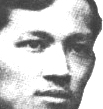|
The
Culinary Legacy of the  Women
of Malolos Women
of Malolos
By
Milagros S. Enriquez
(Edited by Greta Tiongson Sta. Teresa)
The 21 young women of Malolos are known today as the brave women
who dared defy friar control and asserted their rights to education.
We recall how these Maloleñas succeeded in the opening
of a Spanish language school by employing their persuasive charms
on the unsuspecting governor-general.
So it was that these young lasses seized the opportunity to present
their petition for a local Spanish language school before Gov.
Gen. Valeriano Weyler during his visit to Malolos in June 1888.
Despite tile prior opposition of tile friar, these determined
group of young women used their charming tactics on the unsuspecting
official during a ball held at Casa Real in order to win the approval
for tile proposed school. On certain conditions, the women eventually
succeeded in establishing their school but which angered tile
friars to no end, The unholy," friars then retaliated by
trumping up wild charges against the brains of the school. Prof.
Sandico.
We also remember tile role played by these women during the Propaganda
movement and the Revolution. These brave women sometimes served
as couriers for the propagandists by hiding the sheets of messages
under their skirts. They also used their charms as diversionary
tactics to give the filibusteros time to flee during sudden visits
of the Spanish officials. During the Revolution, these Malolos
women were among those who supplied food to help sustain the Katipuneros
in the fight to gain freedom for our beloved land. As according
to art and history, patron Dez Bautista, his father used to tell
him "how Impong Felipa would jest about how the Malolos Republic
would have starved without them."
The valuable support these women extended to the noble cause of
the country will long be remembered. But what most may not realize
however is that aside from how these women left imprints of heroism
on the scrolls of Philippine history, they likewise bequeathed
to us another important legacy -- their rich contributions to
the culinary heritage of our province.
Culinary experiments
These courageous young women taught and shared with their daughters
and other women of Malolos their recipes and their expertise.
What perhaps began as a delightful hobby eventually became a source
of livelihood for their descendants, as well as to other families.
The recipes were handed down from generation to generation as
they have been preserved or recently rediscovered today account
for their delicacies, special viands and pastries Bulacan is famous
for. Little did these women know that their culinary experiments
and expertise were to later enrich Philippine cookery and would
put Bulacan cuisine on the map of special cooking and baking.
We recall that this group of Malolos women were daughters of rich
Chinese merchants who were to produce illustrados -their sons
sent to study in Manila colleges and foreign universities. The
daughters on the other hand, were sent to Manila convent schools
where they were taught the basic Catholic doctrines, the 3Rs,
music including voice culture and piano, arts like embroidery
and sewing, home management and cooking.
When the language school these brave Malolos women established
was closed after the Spaniards left and a new educational system
was introduced by the American colonizers, most of these women
got married to close relatives (it was not uncommon practice then
so as to keep family wealth intact) while some chose to remain
single as they were financially self-sufficient anyhow.
What became a common hobby for most of these brave and rich women
was cooking and then sharing their recipes and expertise during
their informal gatherings in their homes. They would invite relatives,
friends and godchildren to gather in their kitchens to cook the
special recipes learned from the convent. Afternoons became delightful
occasions for gathering for mini-feasts where Spanish, Mexican,
French and other foreign recipes from cookbooks published by foreign
chefs based in Manila were also learned, shared and tested. They
would likewise be testing and tasting the recipes of Pura Villanueva,
an accomplished woman and a known cook at that time.
From Generation to the Next
According to some descendants of these famous women, their culinary
"beneficiaries" included not only close relatives but
also ampons or wards, the daughters of their kasama or tenants
who took pride in serving at the big houses of their landlords
and also their godchildren which they, as their respective ninang,
or kebo, were bringing up. Together \\'ith other paid household
helps, wards and relatives were taught to prepare kesong puti,
itlog na maalat, burong isda, white lumpia wrappers and chicharon.
Eventually, they became food vendors or carinderia owners in the
local market of Malolos.
I remember tl1at as a little girl, I used to live a block away
from tl1e Kamistisuhan district. My classmates who were descendants
of these famous women would pass by my house on their way home
from school. Sometimes I would be invited to go with them to their
homes clustered together in that district. I remember that some
of these houses were joined together by doors and bridges that
together look like a long train. I would be invited to go -up
the old house and I recall how I awed at the antique furnishings,
aparador, escritorio, big sala set with intricate carvings and
wooden pedestals in the house. I would admire the glass -encased
wooden box frames filled with artificial flowers made of velvet
and colored fish scales, gold ribbon artistically arranged with
embroidered piña cloth looking like dainty handkerchief
and embossed with dedication sewn on it. It made me think that
the decor took years to make. While tile lady of the house, called
Impo or grandmother, narrated to us how she herself made the decor
during her convent days, we delighted in the sweets like pastilyas,
suspiros and gorgoria stored in glass jars taken from the top
of a cabinet called vahillera,
Occasionally, after my afternoon piano lessons in Aling Carmen
Tantoco's sala which served as a mini piano studio, I would pass
by tl1e house next door owned by two of the Tanchangco clan, Aurea
and Eugenia. In their silong I would pick my mother's orders of
inipit. pianono and pasta Juan. The old woman called Da Biang
who owned the little sweet shop would be kind enough to give me
dagdag as bonus for me to eat while I walk many meters back home,
It should be noted that back then, few vehicles plied the historic
streets of Malolos such that one could loiter around town alone
safe and unharmed,
I also remember enjoying weekends with my friends across the street
at the back of the Aglipayan church. We should be playing in their
house where special empanada de kaliskis, gorgoria. corbata de
sebo. biscocho de caña could be ordered. Such delicacies
were cooked by Da Naning, a distant relative of Alberta-Ui-tangcoy,
who married Paulino Santos, Da Naning used to tell her suki that
she learned the trade from her Tia Iding (Alberta's pet name),
In short time, the prominent families of Malolos became her clients
- the Bautistas, Aldabas, Jacintos, Crisostomos and Cojuangcos.
Their banquets would not be complete without the empanada as appetizer.
It can be recalled that the father of former President Corazon
Aquino was born in their ancestral home near the Barasoain church.
Only few years ago, the Malacañang presidential driver
used to pick up orders of empanada from the heirs of Da Naning.
Such Malolos delicacies would be served at parties in the palace,
or would be given as gifts and also, consumed as family snacks.
Sundays in Malolos years back spelled family reunions for members
of the clan to see the old folks. Relatives from the city and
nearby places would converge in the old house after the early
mass. It was a common sight to see the mother play the role of
special chef while surrounded by children as the eager food tasters
of the sumptuous meal being prepared. In the late afternoons,
the visiting family members will surely not go home without their
baskets filled with various fruits and vegetables from tenants
and of course the mouth -watering Malolos specialties courtesy
of "lnang" or mother.
Later on, we were able to watch cooking demonstrations sponsored
by the newly - created Bureau of Agriculture, in the Puericulture
centers managed by the Club de Mujeres de Malolos or Malolos Women's
Club. The moving spirit of said club were Mrs. Godofreda Buendia,
the senator's wife, Mrs.Teodora Tantoco, wife of Majistrado Hermogenes
Reyes. Two of these prominent ladies were advisers of the Women's
Club where the women folks were taught the art of processing foods
and preserving fruits which were artistically cut and sliced.
The finished products were then exhibited and sold at the Bulacan
booths at the Manila carnivals of pre-war days.
Mrs. Amparo Bautista Julian, daughter of Malolos Congress member
Felix Balitista, used to narrate with pride how she learned to
make special suspiros with almendras or almonds, leche flan from
carabao mixed with eggs, flavored with dayap rind and sweetened
with honey. These included other delicacies like piti su (which
I later learned to be no other than the cream puff). She also
made beautiful gelatin molds, pasta Juan and pianono for her parties
in the Felix Bautista mansion. She would gratefully credit her
esteemed Tia Iding as the source of her recipes and the one who
handed her expertise in preparing these Spanish and French-influenced
delicacies.
Dez Bautista, one of the well-known descendants of tile brave
Malolos women and as well, loves to relate the unique recipes
of his Lola Pinang, Rufina Tanjosoy. Such would become conversation
topics for food enthusiasts and researchers who come to study
and document Malolos delicacies and special food. One recipe called
Cordero, a mashed potato concoction filled with sautéed
crab flakes, or sometimes bacalao, and shaped into a reclining
lamb would be served to special visitors who came to attend the
Lenten processions. Dez also talks about the Bringhi or local
Paella cooked in big talyasi to be served during town fiestas
to scores of tenants or kasama who stayed in the spacious silong
that extended to the Bautista's big yard. TI1e Arroz Valenziana,
which would be the stuffing of a big turkey decorated a la Caribbean
style would be special entrée for the carving table and
reserved for special guests. Carabao milk ice cream with macapuno
and sorbetes de buko mixed manually in big grafineras were big
favorites, and thought as an unusual refreshment. It should be
noted that during the turn of the century, ice was imported then
from the United States and was therefore rare and which few families
could afford. Mainly owing to such special and generously served
food, the grand feasts of Lola Pinang, as according to Dez, would
be long remembered by its guests.
I
cannot forget our pre-war field trips to Magnolia Plant where
we were treated to the delicious Magnolia Sandwich, Pie, Orange
Popsicle and of course Magnolia Ice Cream. The field trips, usually
joined by students of exclusive schools in Manila, were courtesy
of the chemist of San Miguel Corporation, Mr. Felipe Adriano.
Felipe was the man behind the original Magnolia flavors, is a
first generation descendant of one of the 21 young Malolos women.
Filomena Tiongson who married a "Maginoo" of Malolos,
Eladio Adriano. With Juan Aldaba, the grandfather of Tita Fannie
they were exiled to Mindanao due to their revolutionary activities
Felipe, perhaps owed his fine taste and the knack for dairy products
preparation to his exposure to tl1e delicacies and special food
/pastries regularly prepared by his mother and colleagues.
Socorro
Witangcoy-Cue, a piano teacher and a niece of Alberta, carried
on the cooking tradition of pastilyas de leche wrapped with buntings
which she personally designed and cut. Her specialties like yema,
suspiros, masapan de pili were sought after specially by Manila-based
Maloleños. We recall that from the hobby learned from Tia
Iding it would someday be a source of livelihood that helped her
live comfortably in later years.
Salome
P. Ramos of the La Concepcion bakery, in an interview related
how she was accorded assistance in her business in the form of
advice and various incentives by these ladies from the Kamistisuhan
district. Salome began her famous inipit and pianono products
when she took over tl1e management of pre-war La Concepcion from
her parents. She would later be able to commercially produce inipit,
which would supply Eurobake and other La Concepcion outlets. Owing
mainly to her famous inipit (which by the way is an exclusive
Malolos specialty) and ensaymada, Salome would be leaving quite
a fortune to her children but more important perhaps is the legacy
of making Malolos known for these pastries.
In
one historical celebration at Barasoain church, I recall that
we were able to interview Mrs. Luisa Santos Bernardo. This daughter
of Alberta talked misty eyed on the special ensaymada and empanada
prepared by her mother and how some people learned and benefited
from said delicacies.
A
few years ago, whenever there would be local and foreign visitors
in our ancestral home in Bulacan, we would invite Dra. Eulalia
Tantoco-Almeida, the granddaughter of Basilia Tantoco. Dra. Laling
as she is fondly called excelled in the art of cutting pastilyas.
She would demonstrate her craft before an audience who would always
be captivated by her ability and ingenuity to- cut the wrappers
into artistic and intricate designs without the need of tracing
patterns. She would also informally lecture about the brown -
colored pastilyas which typically Malolos-made and cheese making
from carabao milk or kesong puti. The Tantoco family was able
to help milk vendors earn extra whenever they used to dump their
unsold carabao milk at their staircase. According to Dra. Laling,
such volume of milk would mean a tiresome day for family cooking
and for disposing the milk-based products.
When
I was invited to the town fiesta by the Tengco old maids In Malolos
some years back, I remember the sisters talk about the bygone
days when they used to press gorgoria dough while they gather
at their balcony. According to them, they enjoyed the afternoons
with their Tia Desta, daughter of Leoncia Tantoco Reyes who taught
them recipes and the know-how making of gorgorias.
For her part, Miling Tecson who became the foremost Malolos caterer
of post-liberation era, attributes her culinary expertise from
Esperidion Reyes, son of Maria Tantoco. Miling would recall with
mixed pride and gratitude that whenever there were parties and
grand banquets at the old Reyes' ancestral home and she would
be requested to help the cooks especially commissioned for the
affair. Espiridion would ask Miling to stay beside the cook to
keenly observe his methods and the ingredients used. Later on,
she would already be cooking herself for Espiridion's parties
and eventually, for other hosts and hostesses of house parties
in town. Miling in no time mastered the art of making Pavo Embochado,
Pastel de lengua. Relleno de Pollo. Embotido and desserts all
had distinctly rich Spanish flavor. Her fame as an able cook spread
in the town and other places.
|





![]()




 Women
of Malolos
Women
of Malolos